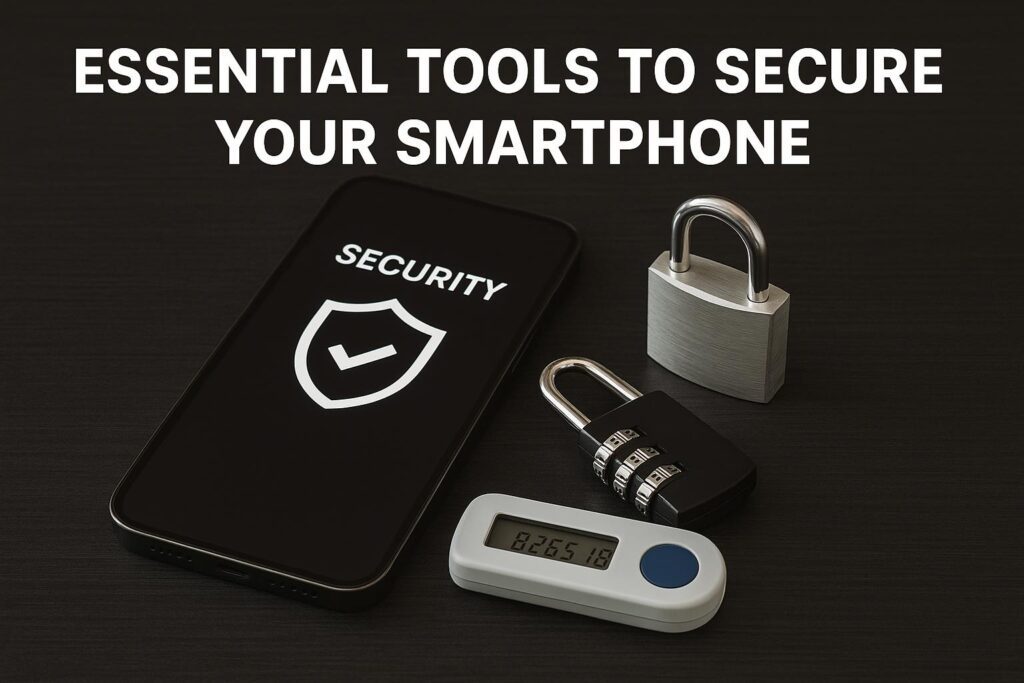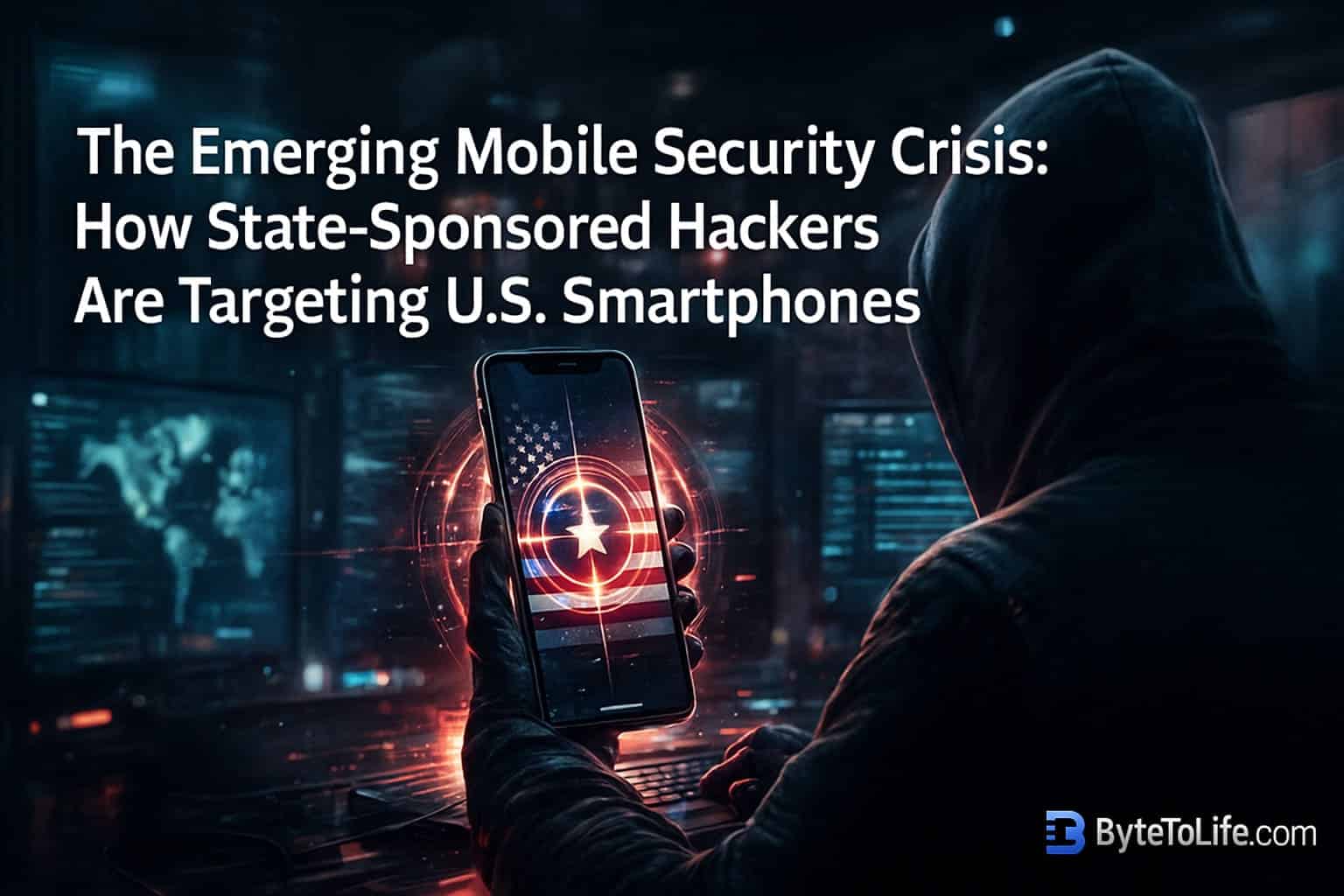Smartphones have become indispensable in our daily lives. From checking emails and messaging to managing finances and controlling smart home devices, these devices serve as our personal assistants. But as their utility has grown, so has their vulnerability. Recent revelations about sophisticated, state-sponsored attacks on U.S. smartphones have exposed a chilling reality: our mobile devices are prime targets for espionage, surveillance, and sabotage.
How Zero-Click Exploits Work
Unlike traditional malware that relies on user interaction—like clicking a link or downloading an attachment—zero-click exploits don’t require any action from the victim. These attacks take advantage of vulnerabilities in messaging apps or network protocols. For instance, a maliciously crafted text message or missed call can trigger code execution without the user ever knowing.
Examples of Real-World Zero-Click Attacks
- Pegasus: Used to spy on journalists, activists, and politicians by exploiting iMessage and WhatsApp vulnerabilities.
- Triangulation: Allegedly developed by state-sponsored actors, used against iPhones in targeted attacks.
Why the U.S. Is a Primary Target
As a dominant force in international tech innovation and political influence, the U.S. presents an attractive target for state-sponsored actors. Political campaigns, government institutions, and corporate entities hold valuable data that foreign adversaries want to access or disrupt.
Key Motives Behind the Attacks
- Political Intelligence: Gaining insights into campaign strategies, diplomatic communications, or internal policy deliberations.
- Corporate Espionage: Stealing intellectual property or gaining unfair trade advantages.
- Disinformation Campaigns: Gaining access to social media accounts and using them to manipulate public discourse.
Role of Telecom Infrastructure
Beyond apps and operating systems, vulnerabilities in the mobile network infrastructure itself play a significant role. Equipment from untrusted vendors, like those flagged by U.S. security agencies, could provide backdoors for interception or injection of malicious code. In response, the U.S. has imposed restrictions on several Chinese telecom companies.
Government and Industry Response
To combat these threats, governments and private tech firms are stepping up:
- Smart Device Labels: Efforts are underway to inform consumers about the cybersecurity hygiene of devices they purchase, similar to nutrition labels on food.
- Zero-Trust Architecture: Enterprises are moving toward models that verify all interactions continuously, rather than assuming devices are secure once authenticated.
- International Alliances: Nations are collaborating to impose export restrictions on surveillance technology and create unified cybersecurity standards.
Essential Tools to Secure Your Smartphone

Here are tools and practices every user should adopt:
- Mobile Antivirus: Apps like Bitdefender, Norton Mobile, or Lookout can detect suspicious behavior.
- Encrypted Messaging: Use Signal or WhatsApp with end-to-end encryption.
- Two-Factor Authentication (2FA): Use apps like Authy or Google Authenticator to add another layer of protection.
- App Permission Review: Regularly audit what data and sensors your apps can access.
- Install Updates Promptly: Don’t delay OS or app updates—they often contain critical security patches.
What to Do If You Suspect You’ve Been Compromised
If your device is behaving suspiciously—battery draining faster than usual, high data usage, unexplained crashes—take these steps:
- Disconnect from the internet immediately.
- Backup your data (locally, not to the cloud).
- Perform a full factory reset.
- Change all passwords associated with your online accounts.
- Contact cybersecurity experts or your organization’s IT team.
Case Study: Pegasus and the Global Surveillance Scandal
A highly publicized incident of mobile phone surveillance centered around Pegasus, a spyware tool created by the Israeli company NSO Group. Investigative journalists revealed that the software had been used by various governments to target more than 50,000 phone numbers, including those belonging to journalists, activists, business executives, and even heads of state.
Pegasus was capable of infecting both Android and iOS devices using zero-click exploits. Once inside the device, it could access the microphone, camera, messages, and even encrypted chats, all without the user ever noticing. This scandal led to widespread condemnation and calls for stricter regulation of surveillance technologies.
The Role of AI in Mobile Security—Friend or Foe?
Artificial intelligence plays a dual role in the current mobile cybersecurity landscape. On the one hand, AI enhances mobile security by enabling behavioral analysis, anomaly detection, and real-time threat prevention. AI-powered security apps can detect unusual user behavior or application patterns that might indicate a breach.
However, AI is also being weaponized. Threat actors are now using AI to develop more sophisticated phishing campaigns, generate realistic voice or video deepfakes, and automate reconnaissance on potential targets. The ability of AI to simulate human behavior poses a significant challenge for traditional security systems.
Securing Smartphones in an Enterprise Environment
Protecting employee mobile devices is essential for maintaining corporate security. Many companies implement a BYOD (Bring Your Own Device) policy, which increases the attack surface. Here’s how organizations can mitigate risks:
- Mobile Device Management (MDM): Use enterprise-grade tools like Microsoft Intune or VMware Workspace ONE to enforce security policies, push updates, and monitor device health.
- Containerization: Separate personal and work data on employee devices to prevent leakage.
- Zero Trust Principles: Continuously verify user identity and device integrity before granting access to corporate resources.
- Employee Training: Educate staff about phishing, social engineering, and mobile threats.
Social and Ethical Implications of Mobile Surveillance
The expansion of mobile surveillance technology has raised numerous ethical concerns. In countries with limited freedom of press and expression, governments have used these tools to stifle dissent, monitor opposition, and intimidate activists. The unchecked proliferation of surveillance tech threatens to erode civil liberties globally.
International bodies such as the United Nations and the European Union have called for greater transparency and accountability in the export and use of spyware tools. Meanwhile, advocacy organizations are pushing for a global moratorium on the sale of surveillance technology until human rights safeguards are in place.
Policy Recommendations and Call to Action
To counter this growing threat, coordinated policy actions are necessary:
- Control Spyware Distribution: Implement legal restrictions on exporting surveillance software to authoritarian governments.
- Mandatory Disclosure: Require companies to report vulnerabilities to platform providers promptly.
- Incentivize Security Research: Fund bug bounty programs and ethical hacking initiatives to uncover flaws before attackers do.
- International Cybersecurity Treaties: Encourage countries to establish norms and agreements on responsible cyber behavior.
Takeaway: Vigilance Is the Best Defense
Mobile devices are no longer just communication tools—they are gateways to our most private information. With adversaries ranging from cybercriminal gangs to nation-states, mobile security must become a personal and institutional priority. Stay informed, secure your device, and advocate for policies that protect digital rights.
ByteToLife.com will continue to monitor these developments and provide insights to help you stay ahead of digital threats.
Emerging Threats on the Horizon
As cybersecurity evolves, so do the tactics of attackers. Some of the most concerning developments in the mobile threat landscape include:
SIM Swapping Attacks
Cybercriminals impersonate a victim to trick mobile carriers into transferring their phone number to a new SIM card. This enables cybercriminals to capture two-factor authentication codes, giving them entry to email accounts, banking apps, and cryptocurrency wallets.
Mobile Ransomware
While more common on desktops, ransomware is increasingly appearing on mobile devices. These attacks lock users out of their phones and demand payment in cryptocurrencies to restore access.
Fake Security Apps
Ironically, some apps posing as antivirus tools are actually malware themselves. Users download these apps believing they offer protection, only to unknowingly compromise their data and privacy.
IoT and Mobile Interconnectivity
Smartphones often control or interact with IoT devices such as smart locks, cameras, or thermostats. Compromising a phone can lead to broader breaches in home or corporate networks, allowing attackers to manipulate physical environments or extract sensitive data.
What Makes Android and iOS Security Different?
While both platforms have made great strides in improving security, they take different approaches:
Android
- Open ecosystem allows flexibility but also introduces risks from third-party app stores.
- Security patches are rolled out by device manufacturers, leading to inconsistent update cycles.
- Google Play Protect offers app scanning, but it’s not foolproof.
iOS
- Closed ecosystem with strict app vetting on the App Store.
- Faster rollout of security updates across supported devices.
- However, zero-click exploits like those used in Pegasus have proven iOS is not immune.
Collaborative Defense: The Role of Tech Giants
Big Tech companies are not just observers; they play a critical role in mitigating mobile threats:
- Apple: Introduced Lockdown Mode in iOS to help users at risk of sophisticated attacks, such as journalists or political figures.
- Google: Continues to improve Google Play Protect and is investing in AI-based malware detection.
- Meta (Facebook): Filed lawsuits against spyware vendors who abused WhatsApp for surveillance.
Long-Term Solutions for a Safer Mobile Future

To create a secure mobile ecosystem, all stakeholders must act:
For Users
- Stay informed about the latest threats.
- Practice good digital hygiene: avoid shady links, review app permissions, and keep your device updated.
- Use privacy-focused tools such as DuckDuckGo browser, Signal messenger, and hardware-based 2FA keys.
For Developers
- Adopt secure coding practices and perform regular code audits.
- Respond promptly to reported vulnerabilities.
- Integrate privacy and security features as foundational elements of all applications and services.
For Policymakers
- Implement comprehensive data privacy laws.
- Support international cooperation on cybercrime investigation.
- Ensure accountability for misuse of surveillance technologies.
Conclusion: A Call to Action
The mobile security crisis isn’t hypothetical—it’s unfolding in real time. The devices we carry in our pockets hold the keys to our identities, finances, and communications. Protecting them is not just a personal responsibility but a collective necessity.
ByteToLife.com will continue to deliver actionable insights, monitor the latest threats, and empower our readers to make informed decisions in an increasingly connected world.



